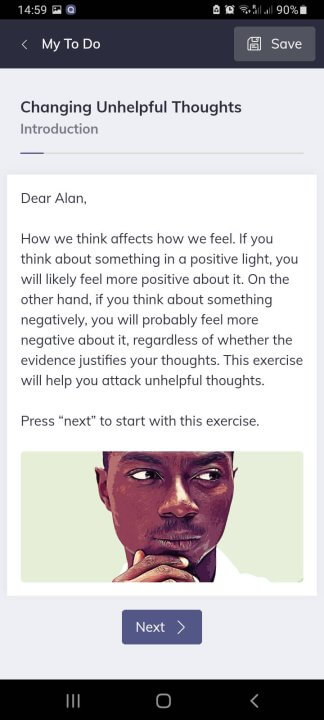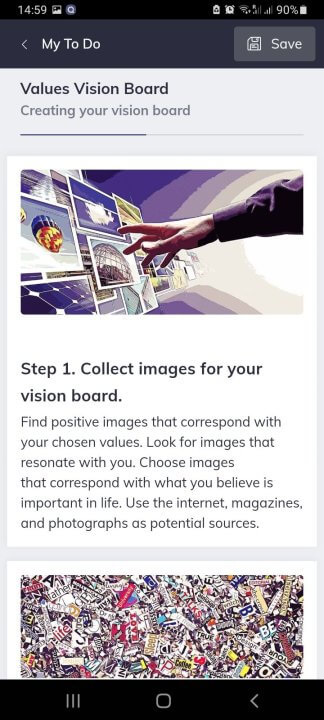During adolescence, young people undergo a huge amount of social, emotional, and physical development. All this change can be difficult to manage, so it’s not surprising that many teens seek out therapy.
The challenge for clinicians, however, is that it can be tricky to choose the right therapy activities for teens.
Fortunately, with the right approach and some good examples like the ones in this article, choosing activities for teens in therapy doesn’t have to be difficult. It can even be fun!
How to Choose Therapy Activities for Teens
If you’re not specifically trained to work with teens, don’t panic. Most therapy activities for children or adults can be adjusted for teens by following a few guiding principles.
Most therapy activities for children or adults can be adjusted for teens by following a few guiding principles.
As a general rule, therapeutic activities for teens should be:
Age appropriate: There’s a lot of variance in themes and techniques that are suitable across the adolescent age range. For example, activities around relationships and sexuality for 13-year-olds would be quite different from those for 17-year-olds.
Relevant: Individual or group therapy activities for teens should be relevant to the issues impacting them. Research shows things like peer pressure, academic stress, bullying, social media, drug and alcohol use, and sexual activity are top concerns of adolescents.[1]
Interactive: Utilize interactive digital tools in therapy where appropriate. Not only will this keep teens more engaged, but digital therapy tools are also proven to have the capacity to enhance the effectiveness of in-person coaching and counseling interventions.
Values-based: Therapy activities are a great way to help teens discover and strengthen their values. Teens who feel grounded in their personal values are better equipped to navigate challenges like peer pressure, drug and alcohol abuse, and unwanted sexual advances.
Developmentally focused: Whereas therapy for adults often involves untangling entrenched patterns of behavior, teens are only just beginning to form their habits. When working with teens, try to focus less on “fixing” problems and more on developing positive habits.
3 Fun Ideas for Adolescents and Youth
It’s important to make therapy activities for teens fun and lighthearted. This shows them the therapy process doesn’t always have to be focused on negatives and can include learning new skills and building up strengths.
These three fun therapy activities for youth are suitable for younger teens up to young adults.
Feelings in the Body
Emotions are felt in the body as well as the mind.[2] Supporting teens to recognize the bodily symptoms of challenging emotions can help them become more aware of and able to regulate their feelings.
Start by introducing the concept of feelings in the body, then ask the teen to identify and draw where they feel anger, sadness, worry, and happiness in the body on this worksheet.
Your Standards for “Being Good Enough”
Cultivating self-compassion is increasingly being recognized as an effective way to promote good mental health and wellbeing in adolescents.[3]
After introducing the concept of self-compassion, try guiding teens through completing the Your Standards for “Being Good Enough” worksheet shown below. A customizable, pre-made template of this worksheet is available in Quenza’s Expansion library, which is included in your free Quenza trial.
This activity asks your clients to list three standards below and describe the following for each:
- How they feel when they are not living up to this standard (e.g., angry or shameful)
- The sacrifices they make to be able to live up to this standard (e.g., neglecting their personal needs or pushing themselves too hard at school.)

Your Standards for “Being Good Enough” is a self-compassion worksheet that can be used to make teens aware of their standards to evaluate their worth and the negative consequences of trying to live up to these standards.
Red and Green Activities
Flow states—the experience of being completely absorbed and immersed in a task—are associated with good psychological health. Considering their stage in life, identifying leisure activities that feel good is a great way to help teens experience more flow states.[4]
On the Quenza app, the Red and Green Activities Expansion shown below can be used as a fun therapy activity for youth.

When you assign this Pathway to a client using Quenza, they’ll receive a daily reflection exercise to their client app.
Each exercise starts with an overview of what “Green” (nurturing) and “Red” (depleting) activities are and how they make us feel, as shown below:

Therapeutic Group Activities
Group therapy activities for teens are a great way to get adolescents to learn from each other by sharing their experiences. Try these exercises for peer pressure and dealing with negative thoughts.
Recommended: If you’re looking for more group therapy ideas, you’ll find them here: Online Therapy in Groups: Platform & Ideas for Your Session.
Peer Pressure Role Plays
Social relationships are highly influential on decision-making for teens, leading many adolescents to experience “peer pressure.”[5]
Group-based role plays are ideally suited to help teens develop the skills needed to manage peer pressure. You might like to choose a topic, such as substance use, risky/illegal behavior, skipping school, or bullying, or you can let group members choose.
Set the role plays up to allow teens to practice responding to negative peer pressure first. Then, ask group members to demonstrate how they can exert positive peer pressure on their friends.
Building an ANT Farm
Adolescence is a great time to start teaching young people how to recognize and respond to unhelpful thinking styles (also known as cognitive distortions). Renowned psychiatrist Dr. Daniel Amen has an approach to working with cognitive distortions using CBT principles called “Killing ANTs” (ANT stands for Automatic Negative Thoughts).
Before doing this therapy group activity for teens, read the article, Do You Have an ANT Infestation in Your Head? You might ask older teens to read the article independently or summarize it for younger teens. It’s also useful to have the nine types of ANTs listed on a worksheet or displayed somewhere that everyone can see.
Ask everyone in the group to draw an outline of an ant (the insect) on a piece of paper, with an ANT (automatic negative thought) written inside it. Then, get the teens to place their pieces of paper in a pile to start building their ANT farm. Set a timer and get group members to write as many as they can in 15 minutes or so.
Once you’ve got your ANT farm, ask each student to choose a piece of paper at random, read it out, and answer two questions:
- Is this thought true?
- How might I feel if I thought this way?
Changing Negative Thoughts
Many negative thoughts we experience are due to faulty thinking rather than based on fact. These negative, inaccurate self-perceptions can create a downward spiral of negative thinking if not properly managed.
Quenza’s Changing Negative Thoughts Expansion, shown below, can be a useful CBT worksheet to help clients identify and reverse unhelpful thinking patterns by unpacking them.
This therapy activity for teens with depression takes the following the reader through several steps, including the following questions:
- On a scale of 1 to 10, how strongly do you believe this thought to be true?
- What evidence supports this thought?
- What evidence do you have against this thought?
- What would you tell a friend (to help them) who would have the same thought?
- Think of your calmest, most rational, and supportive friend or family member. How would he/she
- react to the causal thought? What would he/she say?
- What good things would you gain if you gave up on the thought? How would life be different if you didn’t believe the thought?

Here, we’ve covered many more helpful tools in our full guide to treating anxiety online.
2 Best Art & Music Interventions
Music and art therapy activities for teens can be powerful interventions to equip adolescents with skills to stay psychologically healthy now and into adulthood. Here are our two favorite art and music therapy activities for teens.
Values Vision Board
Values are the guiding principles that influence a person’s attitudes, beliefs, behavior, and wellbeing. Values are primarily developed in adolescence and tend to stay reasonably consistent through adulthood.[6] Therefore, helping teens develop positive personal values can be a powerful way to set them up for good psychological health in later years.
A Values Vision Board is a great art therapy activity you can use with teens to encourage the intentional development of personal values. A pre-made template of the activity is available in the Quenza Expansion library:

After giving a three-step guide to collecting words and images, then assembling the board, the exercise poses some reflection questions. A few examples include:
- How was it to create this board? What did you experience while making it?
- To what extent do you think you live in line with the values depicted on this vision board?
- What could you do to live more in line with the values depicted on your board?
Good Vibes Playlist
Self-regulation, “The act of managing thoughts and feelings to enable goal-directed actions,” plays a foundational role in wellbeing throughout adolescence and adulthood.[7] Music therapy activities for teens can be a useful tool to help young people improve self-regulation.
Ask a young person to make a “good vibes” playlist for the next time they feel angry, sad, or stressed. Explain that this playlist can help them sit with and move through difficult emotions without acting in a way they might regret later.
Spread this activity over a couple of sessions, exploring how your client can use the playlist to deal with challenges and review their experiences with it.
We’ve also created a full guide to emotional intelligence training that you may find useful.
Engaging Teens in Telehealth: 3 Tips
Most of the therapeutic activities for teens we’ve discussed in this article can be adapted to telehealth or used as online coaching tools. Here are some tips to get the most out of telehealth therapy activities for teens.
- Incorporate movement. Add some simple movement at set intervals throughout your sessions. Jumping jacks or standing for some simple stretching exercises are good options.
- Switch up the format. Punctuate your therapy sessions with video and audio content, along with breaks to complete activities and provide feedback
- Silence Notifications. Electronic notifications can be distracting for both client and therapist during sessions. Practice reminding everyone in the session to silence notifications at the outset of each appointment.
Digital Tools for Therapeutic Engagement
Incorporating digital tools into therapy sessions can significantly enhance engagement, especially for tech-savvy teens. Mobile apps, online platforms, and virtual reality (VR) environments offer innovative ways to conduct therapy, making sessions more interactive and appealing. These tools can provide real-time feedback, track progress, and offer a variety of exercises tailored to individual needs, ensuring a personalized therapeutic experience.
Digital tools like meditation apps and mood tracking platforms can be integrated into therapy to promote mindfulness and emotional regulation. These applications allow teens to practice techniques learned during therapy sessions independently, fostering self-awareness and coping skills. The accessibility of these tools on smartphones ensures that teens can use them anytime, anywhere, enhancing the continuity of care.
Virtual reality (VR) therapy is another cutting-edge tool gaining popularity. VR environments can simulate various scenarios, helping teens face and manage their anxieties in a controlled setting. This immersive experience can be particularly beneficial for exposure therapy, as it allows therapists to guide teens through their fears safely and effectively, facilitating gradual desensitization.
Online therapy platforms offer flexibility and convenience, breaking geographical barriers and making therapy accessible to more teens. These platforms often provide a range of services, including video sessions, chat support, and resource libraries, ensuring comprehensive care. The anonymity and comfort of accessing therapy from home can encourage more teens to seek help and engage in therapeutic activities.
Incorporating Creative Arts in Therapy
Creative arts therapy leverages the expressive power of art, music, dance, and drama to help teens explore their emotions and experiences. This non-verbal approach can be particularly effective for teens who find it challenging to articulate their feelings through traditional talk therapy. Engaging in creative activities can foster self-expression, reduce stress, and enhance emotional resilience.
Art therapy encourages teens to express themselves through drawing, painting, or sculpting. This process can help uncover deep-seated emotions and provide a tangible outlet for feelings that are difficult to verbalize. Creating art can be a therapeutic journey, offering insights into personal challenges and promoting a sense of accomplishment and self-worth.
Music therapy involves using music to address emotional, cognitive, and social needs. Teens can participate by listening to music, playing instruments, or composing their songs. Music therapy can help regulate emotions, improve mood, and develop social skills. It can also be a powerful tool for memory recall and processing traumatic experiences.
Drama and dance therapy offer dynamic ways for teens to explore their emotions and build confidence. Through role-playing, teens can experiment with different perspectives and solutions to their problems. Dance therapy uses movement to help teens connect with their bodies and express feelings non-verbally. Both forms of therapy can enhance self-awareness, foster creativity, and improve interpersonal skills, making them valuable components of a comprehensive therapeutic approach.
Final Thoughts
When delivered in an age-appropriate and engaging way, fun therapy activities for teens can be a great way to help adolescents manage emotional challenges and improve long-term psychological health.
The activities covered in this article are suitable for in-person individual and group work with teens, but they can also be effectively delivered through digital methods like the Expansion Library in the Quenza app. This feature allows you to choose from several ready-made activities in the app, or you can custom-build your own.
To get started, sign up for a one-month full-access free trial of the Quenza app.
In addition to Quenza’s Activity Builder, you’ll also get access to our HIPAA-compliant Notes feature and a variety of tools to track progress toward therapy goals and keep clients and family members engaged between sessions.
Frequently Asked Questions
When adapting activities for teens with specific conditions, focus on the core symptoms and challenges associated with each condition. For anxiety, emphasize activities that promote relaxation and cognitive restructuring, such as the “Changing Negative Thoughts” exercise. For depression, prioritize activities that boost mood and increase engagement, like the “Red and Green Activities” exercise. Always tailor the difficulty and content to the individual teen’s current state and capabilities.
Some potential challenges include resistance from teens who may feel skeptical about therapy, difficulty in maintaining engagement, and the risk of triggering emotional responses. To mitigate these risks, build rapport gradually, explain the purpose of each activity clearly, and be prepared to provide emotional support. It’s also crucial to maintain appropriate boundaries and confidentiality, especially in group settings.
The frequency of implementing these activities depends on the individual teen’s needs, the severity of their issues, and the overall treatment plan. Generally, incorporating one or two activities per weekly session can be effective. Some activities, like the “Good Vibes Playlist” or “Red and Green Activities,” can be assigned as homework for daily or weekly practice between sessions. Consistency is key, but avoid overwhelming the teen with too many tasks.
Parental involvement can be beneficial, but it should be carefully managed. Parents can support teens by creating a supportive environment at home for practicing skills learned in therapy. For activities like the “Values Vision Board,” parents might be invited to a session to learn about their teen’s values. However, it’s crucial to maintain the teen’s privacy and autonomy. Always discuss the level of parental involvement with the teen and respect their preferences.
Many of these activities can be easily adapted for online sessions. Digital tools like shared whiteboards or collaborative document editing can replace physical materials for activities like the “Values Vision Board.” For the “Peer Pressure Role Plays,” video conferencing breakout rooms can be used. The “Good Vibes Playlist” can be created using shared music streaming platforms. Ensure that the online platform you use is secure and compliant with relevant privacy regulations. Additionally, provide clear instructions and technical support to ensure smooth implementation of the activities in a virtual environment.
References
- ^ Hellström, L., & Beckman, L. (2021). Life Challenges and Barriers to Help Seeking: Adolescents' and Young Adults' Voices of Mental Health. International Journal of Environmental Research and Public Health, 18(24), 13101.
- ^ Nummenmaa, L., Glerean, E., Hari, R., & Hietanen, J. K. (2014). Bodily maps of emotions. Proceedings of the National Academy of Sciences, 111(2), 646-651.
- ^ Klingle, K. E., & Van Vliet, K. J. (2019). Self-Compassion From the Adolescent Perspective: A Qualitative Study. Journal of Adolescent Research, 34(3), 323–346.
- ^ Mansfield, L., Daykin, N., & Kay, T. (2020). Leisure and wellbeing. Leisure Studies, 39(1), 1-10.
- ^ Ciranka, S., & van den Bos, W. (2019). Social Influence in Adolescent Decision-Making: A Formal Framework. Frontiers In Psychology, 10, 1915.
- ^ Lewis-Smith, I., Pass, L., & Reynolds, S. (2021). How adolescents understand their values: A qualitative study. Clinical Child Psychology and Psychiatry, 26(1), 231–242.
- ^ Murray, D. W. & Rosanbalm, K. (2017). Promoting Self-Regulation in Adolescents and Young Adults: A Practice Brief. OPRE Report #2015-82. Washington, DC: Office of Planning, Research, and Evaluation, Administration for Children and Families, U.S. Department of Health and Human Services.



